Nextiva delivers advanced call routing services for small businesses, helping customers’ calls reach the right person faster. New Nextiva customers can receive a 30% discount on call routing and other services.
Inbound calling customers need to connect with the proper person in your business as quickly as possible to keep them engaged and satisfied. The best call routing software can use a set of custom rules to automatically send calls to various people or departments in your company. Years ago, call routing was only available to huge companies, but cloud software opens this capability up to almost any size company.
The 4 Best Business Phone Services for Call Routing
Cloud-based business phone services provide call routing capabilities that can help your company. The best business phone services offer high-end call routing capabilities, giving you the specific routing features you need.
- Nextiva — Best for most
- RingCentral — Best for hybrid or remote work
- GoTo Connect — Best for getting a wealth of features in a basic plan
- Ooma — Best for small businesses needing an easy setup
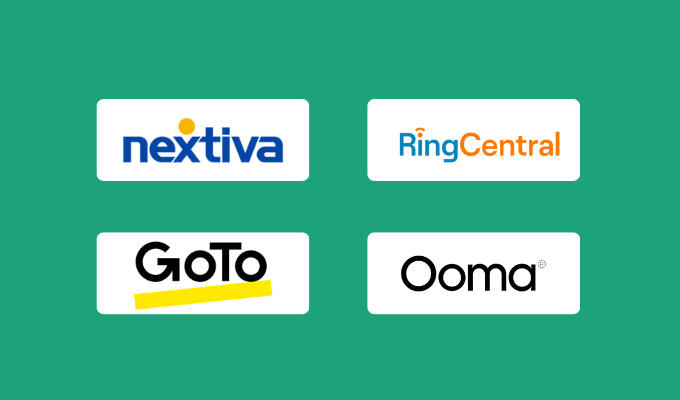
How Call Routing Works
You can set up call routing features when you use business phone service software. The call routing software answers incoming calls to your business. It then sends the calls to a particular person or department in your company based on specific criteria and rules you set up in the software.
Call routing is different from call forwarding. The call routing system uses rules and artificial intelligence to try to send calls to the best possible person in your company to handle that particular call. Call forwarding simply sends the call to a specific person when the first person is unavailable.
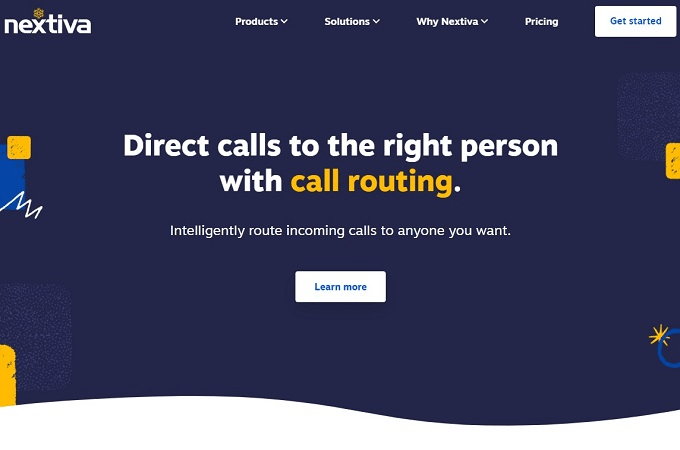
Call routing, also called automated call distribution (ACD) or auto attendant, can work in tandem with other aspects of your business phone service software.
One simple way call routing may work is by having several different phone numbers for customers who call your company. With one number, the call routing software can send the caller to the tech support team. With another phone number, the call router knows to send the call to the sales team.
Another option is to use an auto attendant menu when customers call your general phone number. When the customer selects an option from the phone menu, the system routes the customer to the proper department.
You also can create a call routing system that relies on rules instead of menu selections or unique phone numbers. The call routing system could route the call to a certain person or department depending on things like:
- Time of the day
- Day of the week
- Location of the caller
- Repeat or new caller
You can set up the rules by which the call routing system will work through the software settings.
Types of Call Routing Systems for Departments
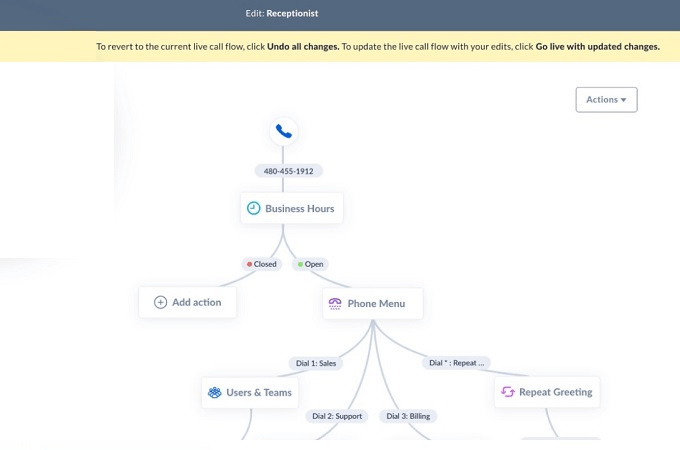
Beyond sending calls to the right department, the call routing system can manage who within the department will answer each call.
When creating a call routing system, start by deciding what base call routing system you want to use. You then can adjust the rules for that type of system to ensure that it will fit the department’s needs perfectly. The primary types of call routing systems include the following.
- Idle time: The system would measure which call center team member has been idle the longest. It then would send the call to that team member. Once that team member takes a call, that team member moves to the back of the list.
- One preferred agent: The system can send the call to one person in the department. If that person is unavailable, the system finds the second person on the department’s list. The process continues until the system finds an available agent.
- Weighted preferred agent: You can also set up the system to route a certain percentage of calls to a particular person. Other calls would go to others in the department, and you can assign each person to receive a portion of those other calls. This is an excellent way to send more calls to your best-performing team member or give a trainee a smaller number of calls during the learning process.
- Simultaneous: With simultaneous call routing, the system will ring the phones of everyone in the department at the same time for an incoming call. Anyone can answer it. When you want a sales team to compete for incoming leads, the simultaneous system can encourage team members to answer the phone fast.
- Circular: When calls come into a particular department in your company, the system passes the calls to team members in a specific order. The system uses an ordered list of team members and sends the call to the person next in line. Once someone receives a call, that person goes to the back of the line. This works nicely for a sales team, so everyone has an equal chance of making a sale on an inbound call.
- Relationship: When an incoming caller has called in the past, the call routing software can automatically send the caller to the last team member with whom the caller spoke.
Benefits of Using Call Routing
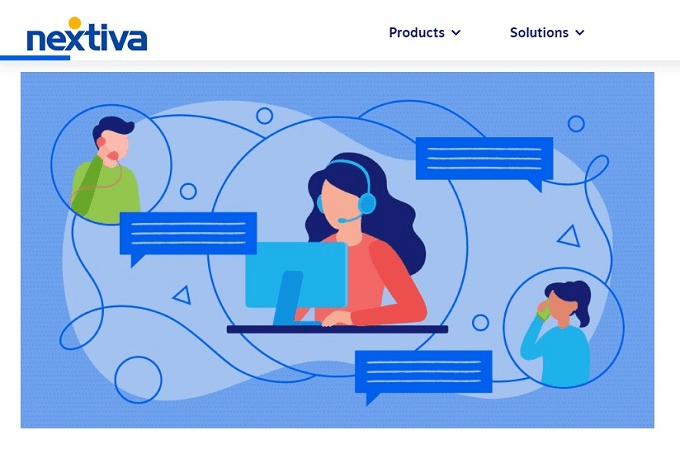
Using call routing, even in a small business, can give the impression to customers that you have a far larger organization. When your auto attendant automatically routes the calls to the right person or department, it impresses customers.
A call routing system can provide several other benefits, too, including:
- Better customer experience: When customers are able to speak to the proper person or department on the first try most of the time, they have a greater level of satisfaction.
- Fewer dropped calls: Even when using the best phone system, the chances of losing a customer call increase when manually forwarding calls. Successful call routing systems should reduce the need to forward calls because the call will be in the right place the first time.
- Better productivity: Your team members should be more productive because they receive calls appropriate to their skills. Through routing, team members receive fewer calls that don’t fit their skills. They then don’t have to waste time figuring out what the customer needs and which team member should handle it.
- Fairer treatment: For a sales team, using call routing can create the fairest way to distribute potential leads through inbound calls. For call center team members, the call routing software can ensure all team members receive a similar number of calls throughout the day.
- Automatic forwarding: With a call routing system in place, you can reduce the number of voicemails a customer must leave. You can set up the system to automatically forward calls to the next person on the list if the first person is busy or out of the office.
Ultimately, the primary advantage of a call routing system is to reduce the cost per incoming customer call for your company. When your team members handle calls more efficiently and customers spend less time on the phone per call, your cost goes down.
Advanced Call Routing Features
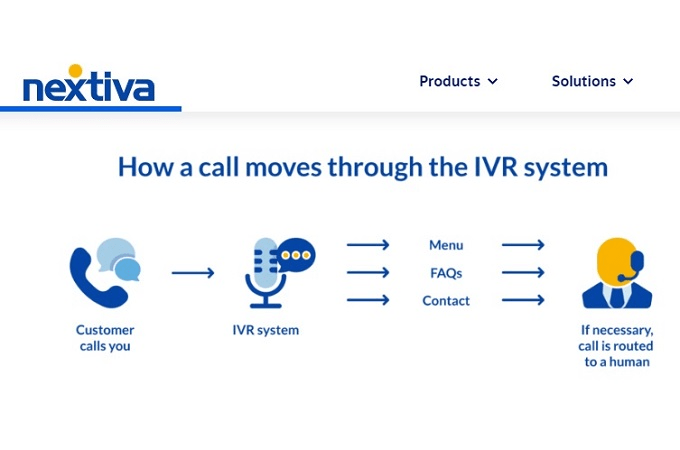
Although basic call routing systems can improve the customer experience significantly, other options exist. Your company may need advanced call routing features to better handle the types of incoming calls you receive.
One of the most popular options for advanced call routing is an interactive voice response (IVR) system. The IVR uses an automated phone attendant that greets callers to your business and then presents the caller with a list of menu options.
Customers can choose from the menu by pressing a phone button or by verbally describing what information they need. If the caller presses a button on the phone, the IVR system routes the call based on a flow chart you create in the software.
If the caller issues a verbal command, the IVR uses artificial intelligence to decipher the caller’s intent. It then routes the call to the appropriate person or department based on what the IVR believes to be the caller’s need.
When the IVR system cannot decipher the caller’s verbal commands, it takes steps to reduce routing errors. Typically, it moves the caller from verbal commands to phone button menu options. This forces the caller to make a precise command selection that the system understands.
IVR can even give callers answers to common questions, such as your operating hours, without involving a human team member.
Best Practices for Creating a Call Routing System
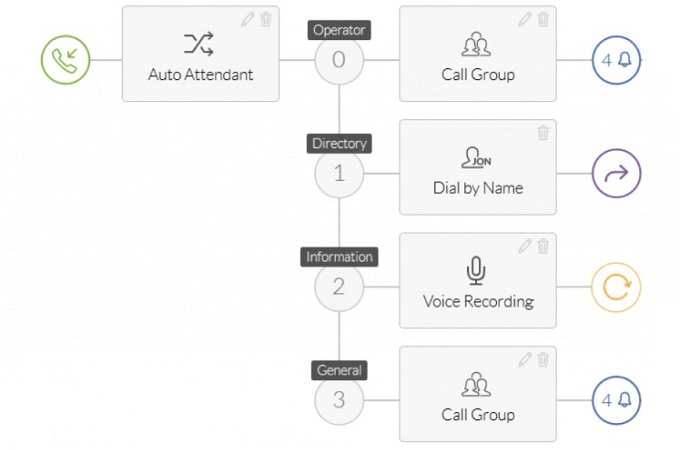
Although the right call routing software package can do a lot of the work for you, the system may not be perfect out of the box. Most small businesses will want to customize the call routing system to ensure that it fits their needs and their customers’ needs perfectly.
When customizing the system, you will want to follow some basic steps that represent best practices. These steps can lead to the best possible chance at success with the system.
- Create a flow chart: A flow chart is a perfect way to visually represent how the call routing system will work. Using a flow chart helps you see areas where problems may exist. Nextiva, for example, offers a Call Flow Builder feature that helps you build the call routing and IVR system visually.
- Understand the types of call routing: As you plan your call routing system, figure out which type of routing fits your business best. You may find that you need different types of routing for various departments in your company.
- Use fewer choices: Avoid having several menu choices that customers must listen to in the initial call routing system selection. Customers will experience frustration if you have too many menu choices. Instead, use menus and submenus to have fewer choices at each step.
- Seek feedback: After deploying your call routing system, create an option where customers can provide feedback about the system after the call completes. Such feedback may point out areas where customers are experiencing problems.
- Measure performance: You can use business phone software to measure your call center’s performance. Areas showing improvement can give you confidence that your call routing system is working properly.
Mistakes to Avoid When Creating a Call Routing System
Call routing system problems can lead to frustrated customers and frustrated members of your company. When you are creating a call routing system, use these tips to avoid making common errors.
- Creating long hold times: When you don’t have enough call routing options, customers may end up on hold for long periods of time. Customers dislike sitting on hold, which means your call abandonment rate could climb. Try to use the call routing system to give customers the ability to connect with a team member as quickly as possible.
- Ignoring personal information: Many companies use an IVR system to collect personal information about the caller before connecting the call to a human. If you do this as part of your call routing system, make sure your team member can see the information when answering the call. No customer wants to have to repeat giving personal information.
- Treating it like call forwarding: A successful call routing system is not simply sending calls to a different team member when the first team member is busy. Although it can use elements of call forwarding, your call routing system should go beyond basic call forwarding. It should use the caller’s information to route the call to the proper person intelligently.
- Refusing to make changes: It would be rare for a call routing system to be perfect the first time you create and deploy it. Even if you do a lot of testing before deployment, you still may have unclear areas for customers. Don’t be afraid to make changes if your customer feedback, performance measurements, or further testing show issues.
- Not focusing on the customer’s point of view: Any call routing system you create must work well for the customer making the call. As you plan and develop the system, always focus on how the customer will use the system. Make things as easy as possible for the customer, and you’ll have a better chance at success.
Final Thoughts About Call Routing
If your call center employees are constantly manually passing customer calls from person to person, your call center’s efficiency is lacking. Additionally, those people calling your company have a greater chance of becoming frustrated when they don’t receive a quick answer to the problem from the first team member.
Your customer support resources can benefit tremendously from using call routing features inside business phone services software. More efficient routing gives your team members a better working experience and saves you money.
In our Nextiva review, we pointed out its strong call routing features. Other cloud software packages that are part of our best business phone services list also perform well in call routing. Using call routing capabilities should provide a better experience for customers and employees.
